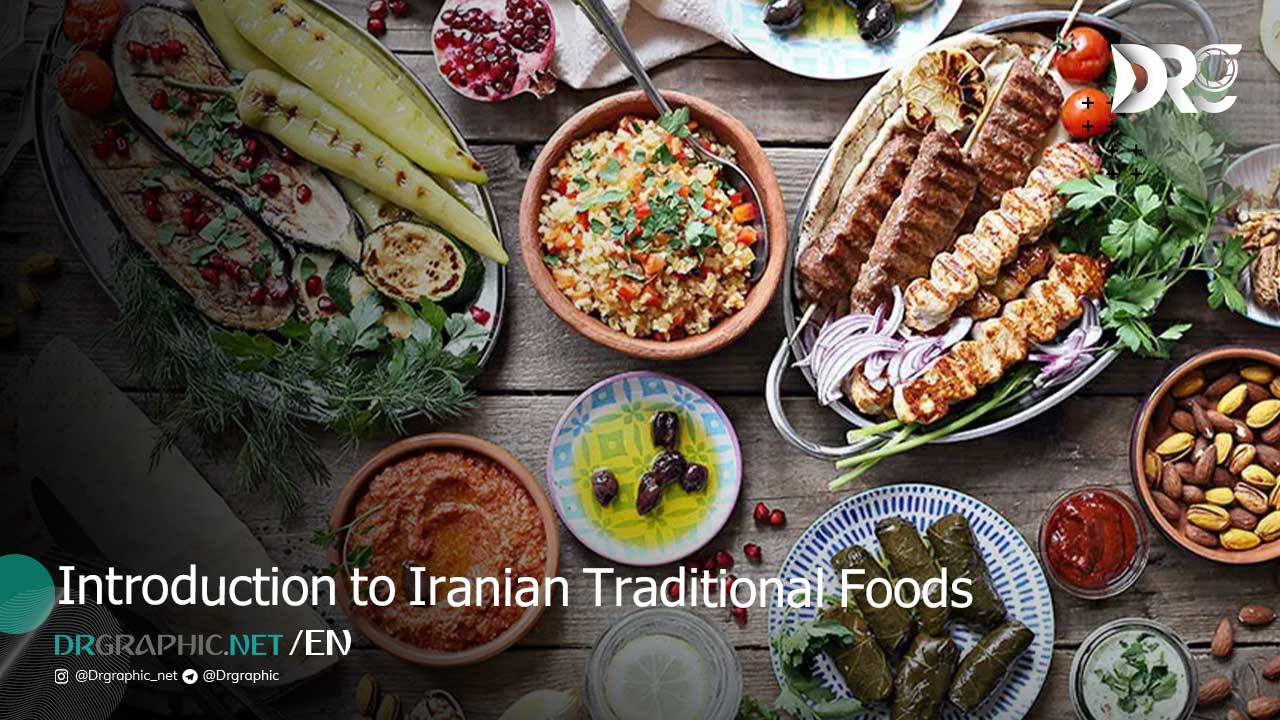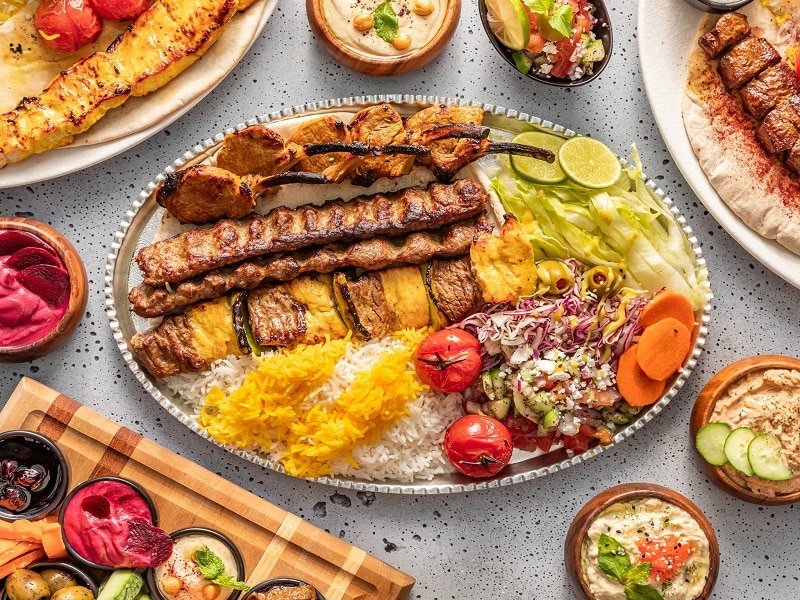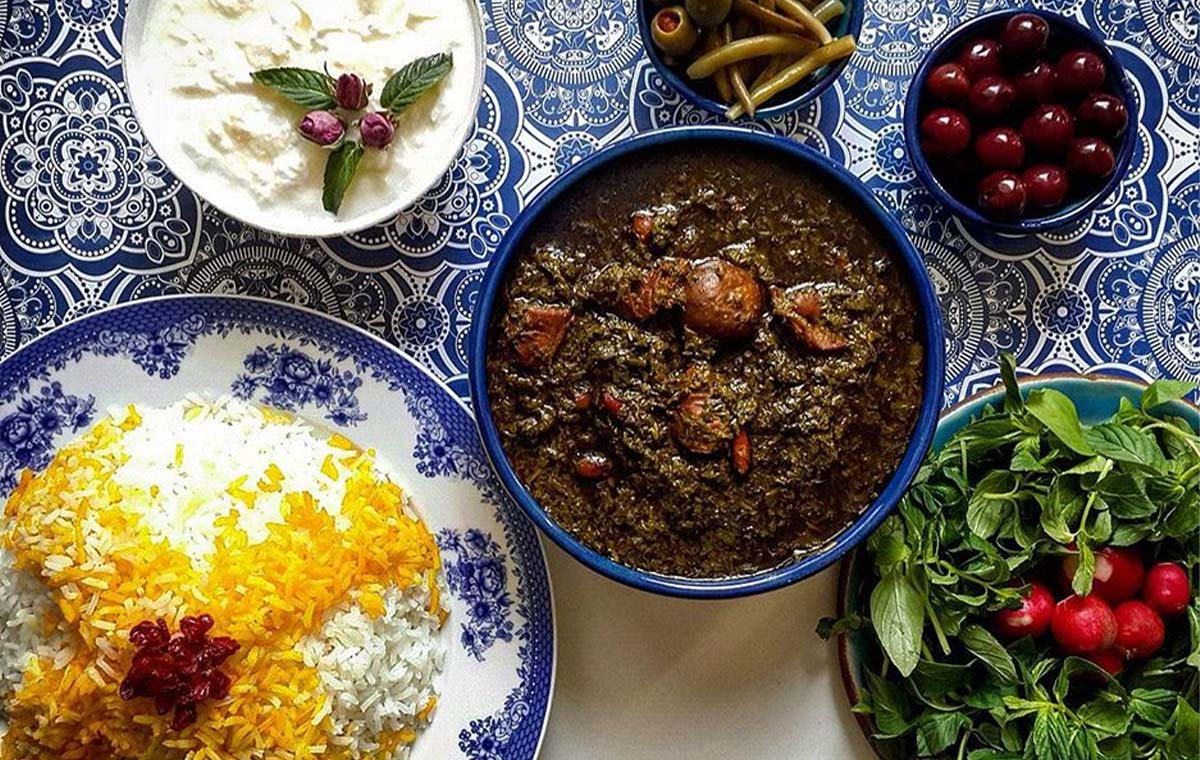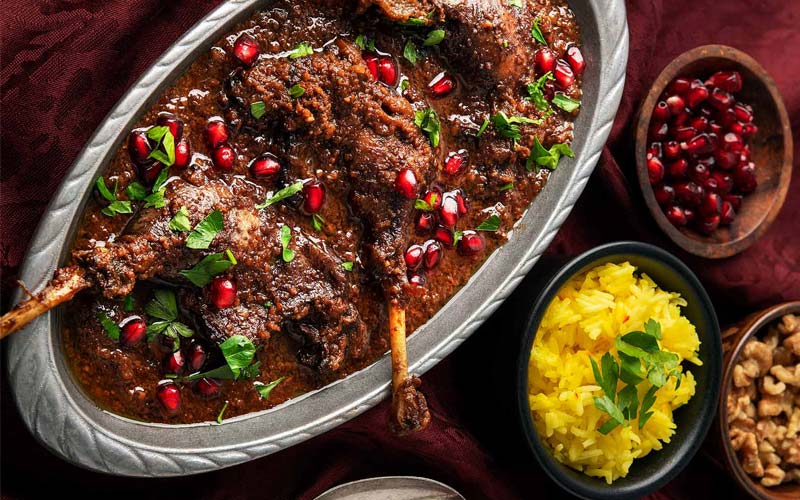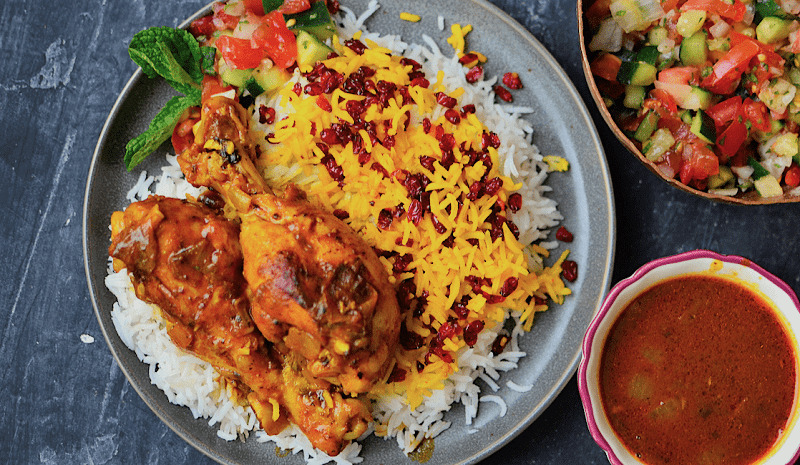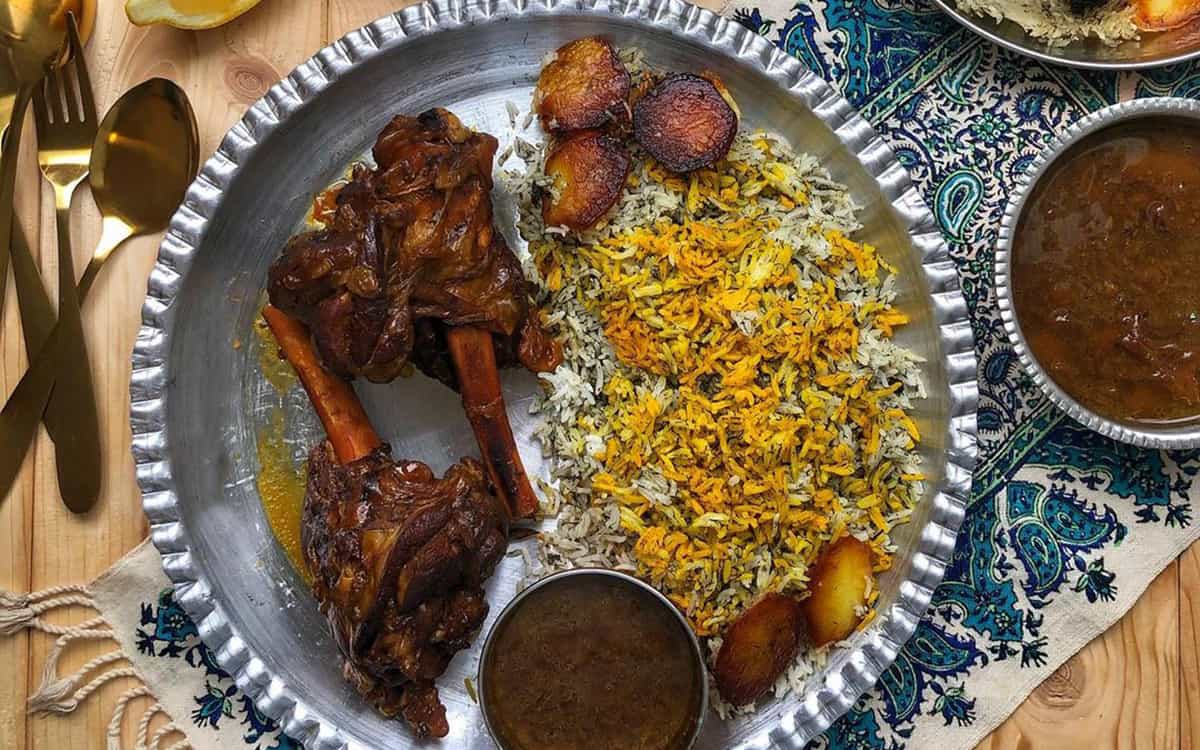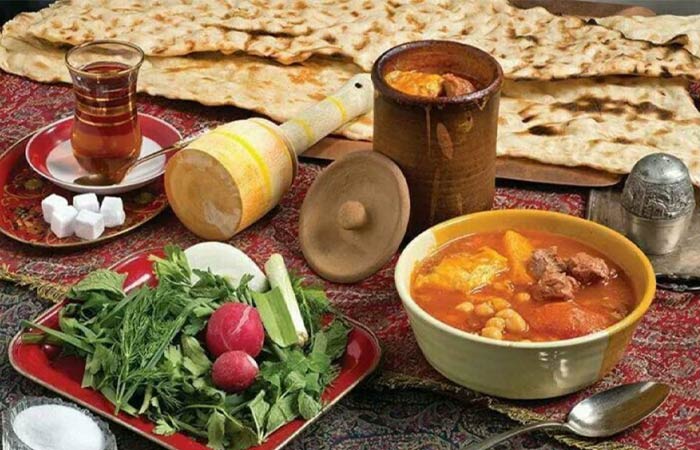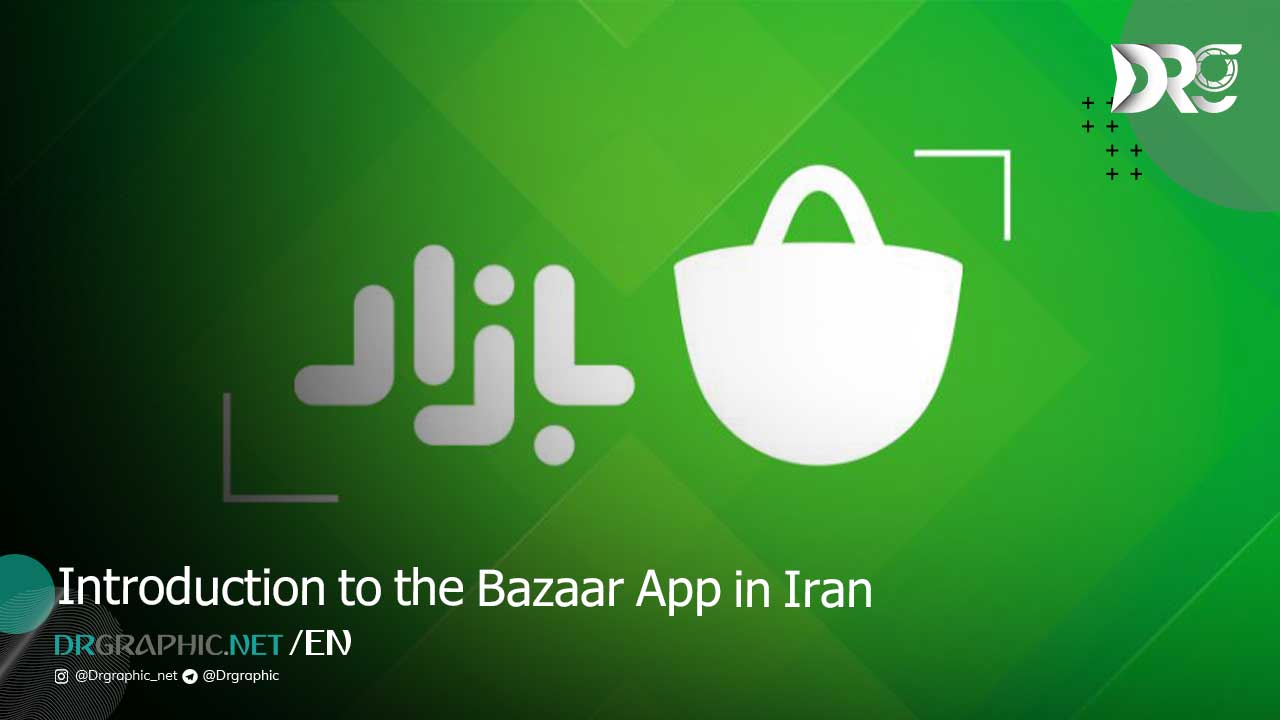Iranian cuisine is a reflection of the country’s rich history, diverse geography, and cultural influences. Rooted in ancient Persian traditions, Iranian food combines aromatic spices, fresh herbs, and slow-cooked ingredients to create dishes that are both flavorful and nutritious. From hearty stews to fragrant rice dishes, Iranian cuisine has something to offer for every taste.
This article from Dr.Graphic introduces seven of the most famous traditional Iranian foods, each with its unique flavors and cultural significance.
1. Chelo Kabab (چلو کباب)
Chelo Kabab is Iran’s national dish and one of the most beloved meals in Persian cuisine. It consists of saffron-infused steamed rice (chelo) served with various types of grilled kebabs. The most popular variations include:
- Kabab Koobideh – Minced lamb or beef mixed with onions and spices, grilled on skewers.
- Kabab Barg – Thinly sliced marinated lamb, beef, or veal, grilled over an open flame.
- Joojeh Kabab – Saffron-marinated chicken pieces grilled to perfection.
This dish is typically served with grilled tomatoes, butter, sumac, and a side of Doogh (a traditional yogurt-based drink).
2. Ghormeh Sabzi (قرمه سبزی)
Often referred to as the “king of Persian stews,” Ghormeh Sabzi is a deeply aromatic and flavorful dish made with a mix of herbs (parsley, cilantro, fenugreek, and leeks), slow-cooked with tender lamb or beef, red kidney beans, and dried limes (limoo amani).
This stew is traditionally served with Persian rice (Chelo), allowing the flavors to fully develop over long cooking hours. Its unique blend of sour and savory tastes makes it a staple in every Iranian household.
3. Fesenjan (فسنجان)
Fesenjan is a luxurious Persian stew dating back to ancient Persia. Made with ground walnuts, pomegranate molasses, and either chicken or duck, this dish offers a perfect balance of sweet and sour flavors.
The slow-cooking process allows the walnuts to release their natural oils, creating a rich and thick sauce. Fesenjan is commonly enjoyed with Persian saffron rice, making it a popular dish for festive occasions like Yalda Night and Nowruz.
4. Zereshk Polo Ba Morgh (زرشک پلو با مرغ)
A classic Persian dish, Zereshk Polo Ba Morgh consists of saffron-infused rice mixed with barberries (zereshk) and served with tender braised chicken in a tomato-saffron sauce.
The barberries add a slightly tart taste that complements the richness of the chicken, making this dish a favorite for both everyday meals and special gatherings. A touch of slivered almonds and pistachios is often added to enhance its visual appeal and taste.
5. Baghali Polo (باقالی پلو با گوشت یا مرغ)
Baghali Polo is an aromatic rice dish made with dill and fava beans, traditionally served with either slow-cooked lamb shank (mahicheh) or chicken.
This dish is widely popular at Persian weddings and formal gatherings, where its vibrant green and white colors symbolize freshness and prosperity. The combination of saffron, butter, and tender meat makes Baghali Polo a rich yet well-balanced meal.
6. Dizi (آبگوشت)
Also known as Abgoosht, Dizi is one of the oldest and most traditional Persian dishes. It is a hearty lamb stew slow-cooked with chickpeas, potatoes, tomatoes, and dried limes.
Dizi is traditionally served in a stone pot, and the eating process involves two steps:
- The broth is separated and enjoyed as a soup, often with pieces of Persian bread (sangak or lavash).
- The remaining solid ingredients are mashed together and eaten with fresh herbs, pickles, and more bread.
Dizi is a true comfort food, often enjoyed in Persian teahouses.
7. Ash Reshteh (آش رشته)
Ash Reshteh is a thick and hearty Persian noodle soup made with lentils, chickpeas, beans, spinach, and fresh herbs, garnished with fried onions, garlic, and Kashk (fermented whey).
This dish is commonly prepared during Nowruz (Persian New Year) and religious gatherings, as it is believed to bring good fortune. Its warming and nutritious qualities make it a popular choice in cold seasons.
Read more:
Final Thoughts
Iranian traditional foods are a true reflection of the country’s culture, history, and regional diversity. Each dish carries centuries of tradition, blending flavors that have been passed down through generations. Whether you’re enjoying the grilled perfection of Chelo Kabab or the rich flavors of Fesenjan, Persian cuisine offers an unforgettable culinary experience.
Resources: Wikipedia _ IRANFOOD
How useful was this post?
Click on a star to rate it!
Average rating 5 / 5. Vote count: 1
No votes so far! Be the first to rate this post.

